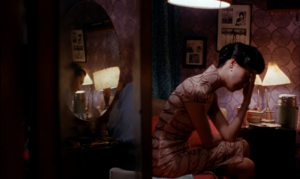Time’s up and sexual harassment will no longer be tolerated within the Australian screen industries. That’s the clear message being sent by Screen Australia’s new Code of Conduct to Assist the Prevention of Sexual Harassment. The policy strictly enforces long-existing sexual-harassment laws and makes funding directly conditional on compliance – it’s the equivalent of posting giant neon billboards at every corner and threatening massive fines.
According to the Australian Human Rights Commission, one in five women and one in twenty men report sexual harassment in the workplace. As Screen Australia’s chief operating officer Fiona Cameron stated in a February press release, ‘The Sex Discrimination Act was enacted in 1984, but that has not stopped sexual harassment occurring in Australian workplaces, including in the screen industry.’
Spurred on by international and local revelations of abusive behaviour in the entertainment industries, Screen Australia joins organisations like Screen Producers Australia (SPA) and the Media, Entertainment & Arts Alliance (MEAA), which have been keen to refine and restate their commitments to prevent sexual harassment and take complaints seriously. At SPA’s Safe Workplace Training workshop earlier this year, Cameron acknowledged that the new code was not revolutionary but rather intended to ‘bring the law into plain view, in plain English, and provide pathways to address and resolve issues’.
Having come into effect in April, Screen Australia’s code of conduct covers all productions approved by the agency. In practice, this means every single person working on a project – from employees to interns and subcontractors – will be given a copy of the document. An abridged version in poster form will be prominently displayed in workplaces. If ignorance of the law was ever an excuse, it certainly won’t be now.
Producers will be required to nominate a trained sexual-harassment prevention contact, similar to a staff member responsible for first aid, workplace safety or emergency evacuation. This person will be tasked with enforcing the code’s requirements and addressing any complaints that may arise over the entire period of production and post-production. A person can also report complaints to their supervisor or directly to the producer, who has ultimate legal responsibility.
At the conclusion of a project, a compliance report and statutory declaration must be filed, confirming that all obligations were met and that, if an incident did occur, it was dealt with in a fair, timely and confidential manner. Failure to submit this documentation would be considered a contract breach by Screen Australia and would have serious consequences, including the withholding of final payments and the risk that a producer would be denied future funding from the agency.
While the documents are purely self-reported and therefore open to dishonesty, the notable inclusion of a statutory declaration affords the process a certain gravity. There are civil and criminal consequences attached to providing a false or misleading declaration, and it’s hoped this will prevent the exercise from being mere box-ticking.
If all this sounds like a lot of added responsibility for producers, who must now factor into budgets the costs of education and compliance, that’s something they’ll have to wear. So far, nobody’s complaining publicly; as they are classed as employers under Australian law, producers have long been responsible for the safety and wellbeing of those working on their projects.
Sexual harassment (as defined by section 28A of the Sex Discrimination Act) is any unwanted or unwelcome sexual behaviour that makes a person feel offended, humiliated or intimidated. This covers not only the more obvious behaviours that would be considered offences under criminal law – physical assault, indecent exposure, sexual assault, stalking or obscene communications – but also more subtle and widespread forms of harassment. Common examples, as listed in a Screen Australia fact sheet, include: staring or leering, suggestive jokes or insults, unnecessary touching, and the displaying of posters, magazines or screensavers of a sexual nature.
Lest anyone fear this means the end of all fun and flirting on set (and, of course, many happy couples fall in love at work), it must be emphasised that the terms ‘unwelcome’ and ‘unwanted’ are key in all definitions of sexual harassment. Mutual or consensual interaction, flirtation or friendship is not sexual harassment. But now, more than ever, great care must be taken in ensuring that explicit consent is obtained. The tricky negotiation of this may feel awkward and ‘unromantic’ at first, but it’s well worth the risk.
Screen Australia’s new code only covers productions under its umbrella. But it is working in close conjunction with SPA and the MEAA to draft a broader, industry-wide set of policies to address workplace bullying, discrimination and harassment. Helpful examples and definitions are included in these documents, available on the SPA website. For example:
The person on the receiving end of the sexual harassment does not need to object to the conduct or ask for it to stop to be sexual harassment. You do not need to intend to offend, humiliate or intimidate another person for the conduct to be sexual harassment.
And, in case anyone needed to be overtly told, ‘unwanted or persistent proposals of marriage’ can also constitute sexual harassment. Moreover, many older workers may find this next example in the SPA/MEAA documents-in-progress illuminating:
Sexual harassment does not need to be directed at a particular person to be unlawful. For instance, telling an inappropriate joke at the lunch table where another person was present, but not part of the conversation, may constitute sexual harassment.
The mood has shifted in the Australian workplace. What was once funny or ‘just a joke’ is no longer a laughing matter. And that’s a very good thing.





